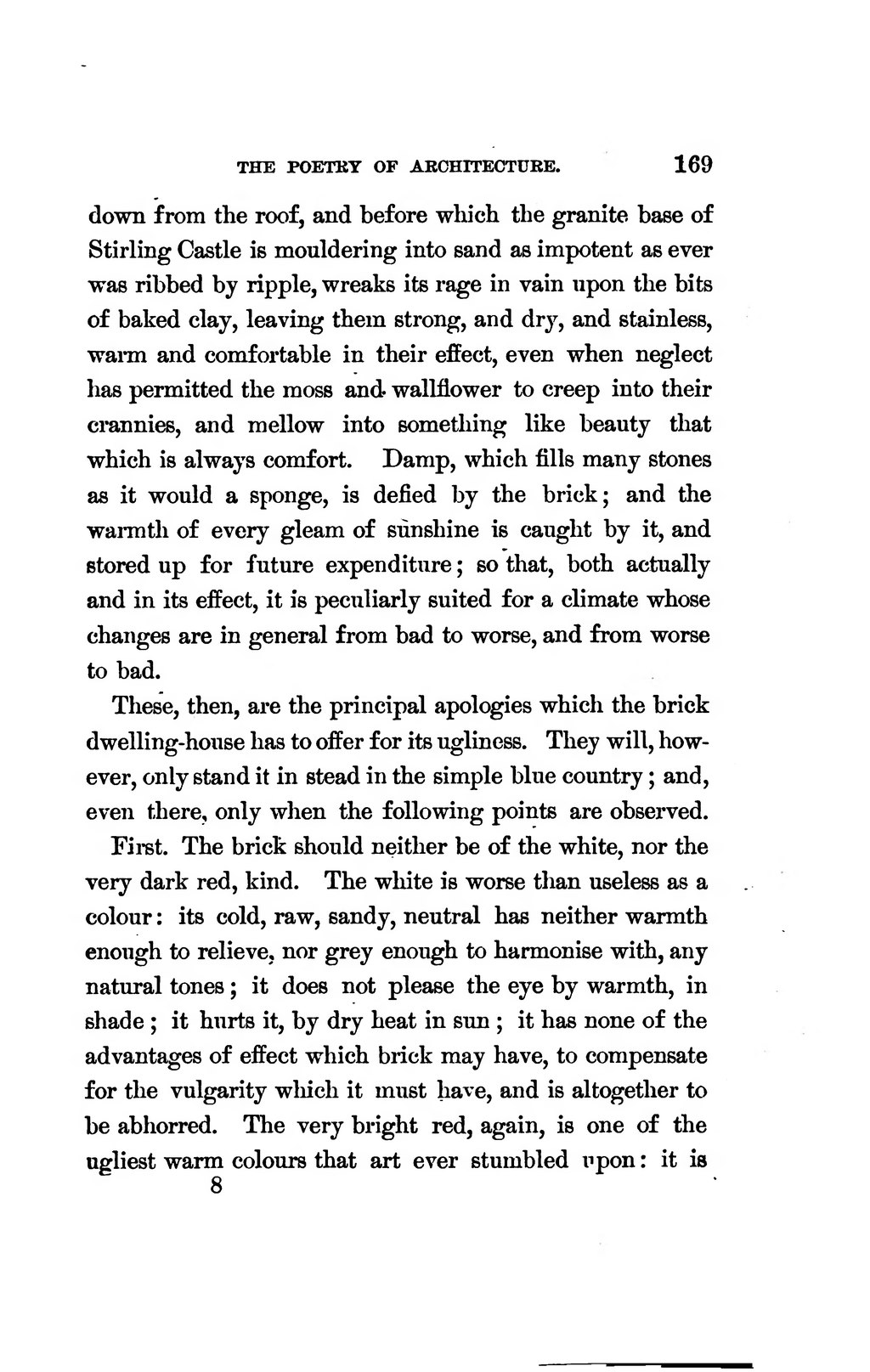down from the roof, and before which the granite base of Stirling Castle is mouldering into sand as impotent as ever was ribbed by ripple, wreaks its rage in vain upon the bits of baked clay, leaving them strong, and dry, and stainless, warm and comfortable in their effect, even when neglect has permitted the moss and wallflower to creep into their crannies, and mellow into something like beauty that which is always comfort. Damp, which fills many stones as it would a sponge, is defied by the brick; and the warmth of every gleam of sunshine is caught by it, and stored up for future expenditure; so that, both actually and in its effect, it is peculiarly suited for a climate whose changes are in general from bad to worse, and from worse to bad.
These, then, are the principal apologies which the brick dwelling-house has to offer for its ugliness. They will, however, only stand it in stead in the simple blue country; and, even there, only when the following points are observed.
First. The brick should neither be of the white, nor the very dark red, kind. The white is worse than useless as a colour: its cold, raw, sandy, neutral has neither warmth enough to relieve, nor grey enough to harmonise with, any natural tones; it does not please the eye by warmth, in shade; it hurts it, by dry heat in sun; it has none of the advantages of effect which brick may have, to compensate for the vulgarity which it must have, and is altogether to be abhorred. The very bright red, again, is one of the ugliest warm colours that art ever stumbled upon: it is

